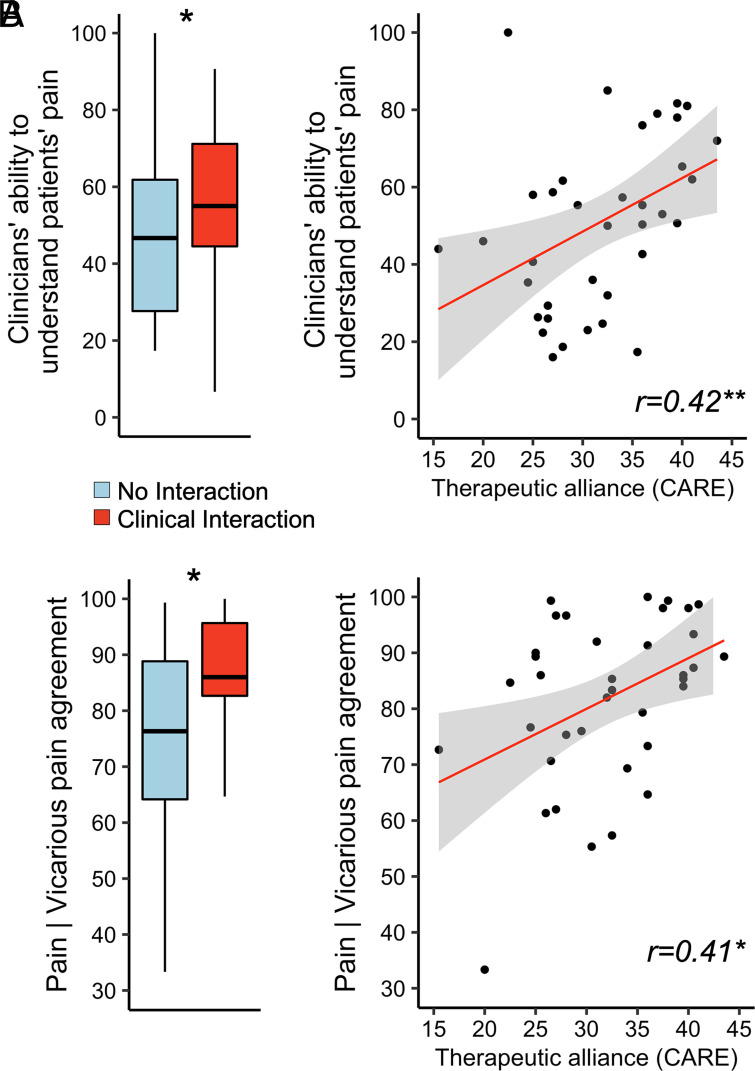Fig. 3.
Ratings of pain empathy and agreement between patients’ pain and clinicians’ vicarious pain. (A) The clinicians’ ability to understand patients’ pain, as rated by the patient, was significantly higher for Clinical Interaction dyads, compared to No Interaction dyads (Left). Clinicians’ ability to understand patients’ pain was also rated as higher for dyads characterized by higher therapeutic alliance (Right). (B) Correspondingly, patient–clinician agreement in their respective ratings of pain and vicarious pain (100 = perfect agreement, 0 = the least possible agreement, operationalized as the absolute difference between the clinician’s mean vicarious pain vs. the patient’s mean pain intensity, subtracted from 100 (i.e., 100 = perfect agreement, 0 = the least possible agreement) was higher for Clinical Interaction relative to No Interaction dyads (Left). Moreover, Pain | Vicarious pain agreement also correlated positively with therapeutic alliance (Right). CARE = Consultation and Relational Empathy questionnaire. *P < 0.05; **P < 0.01

